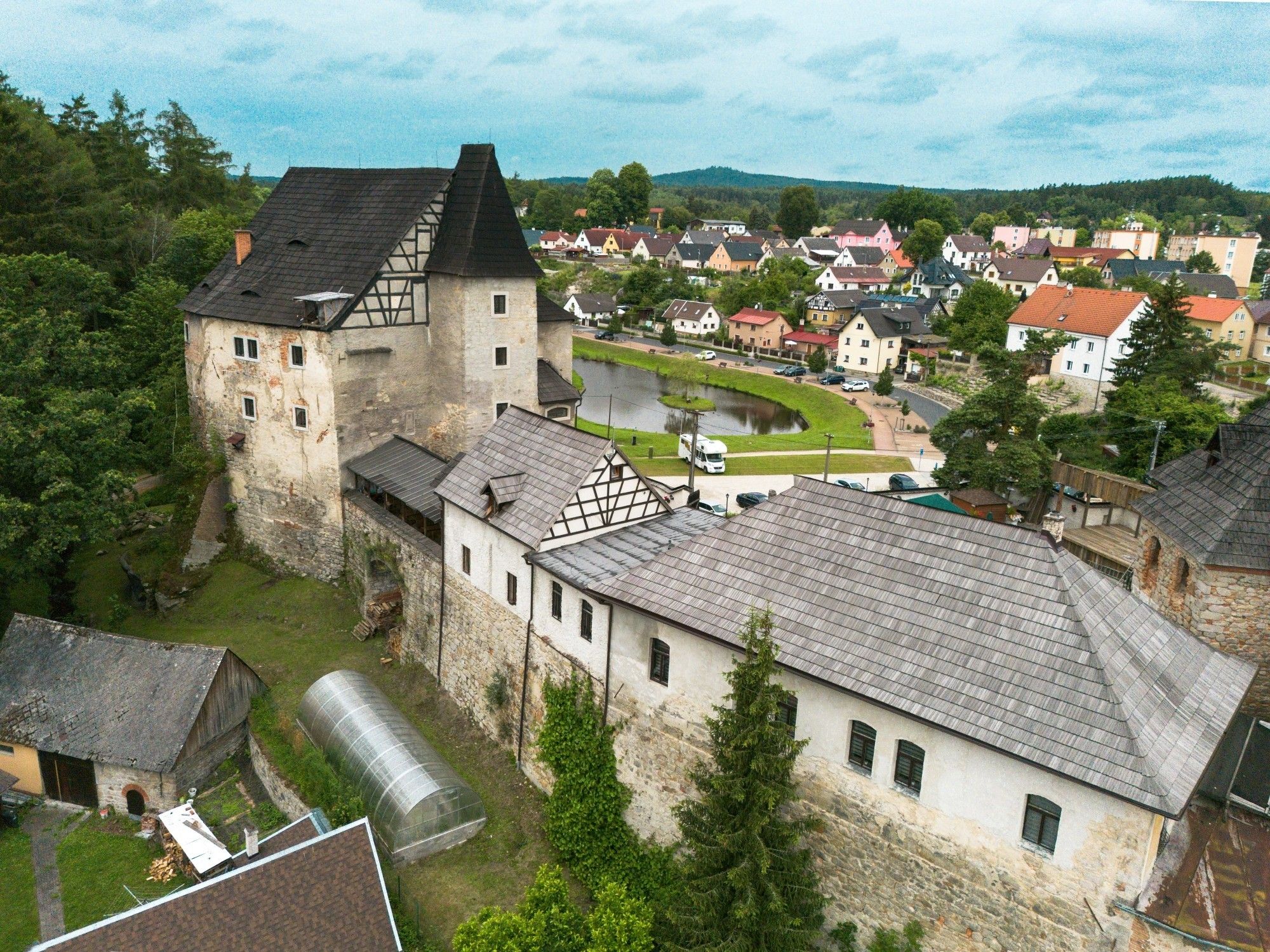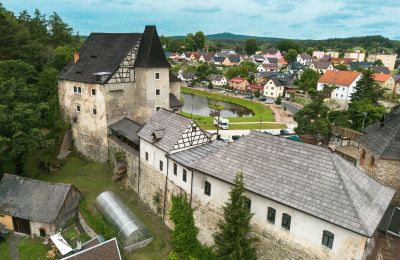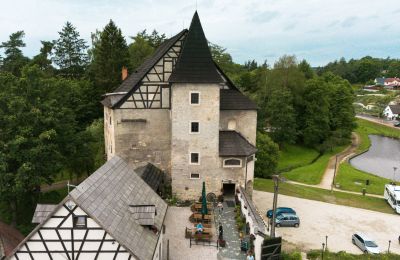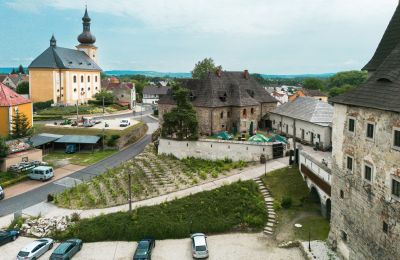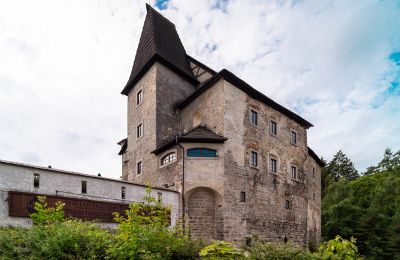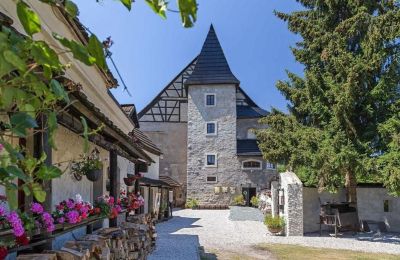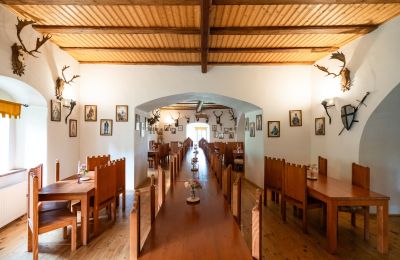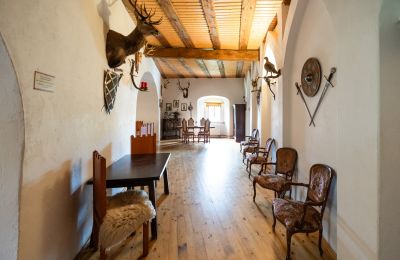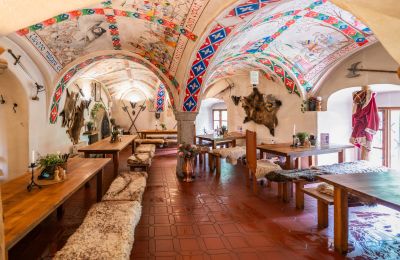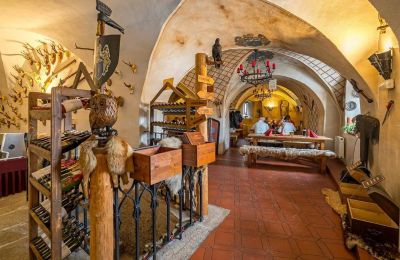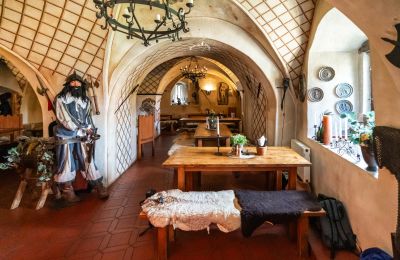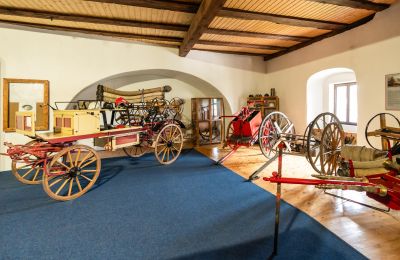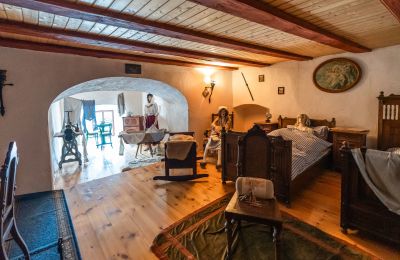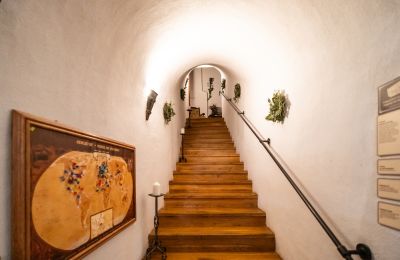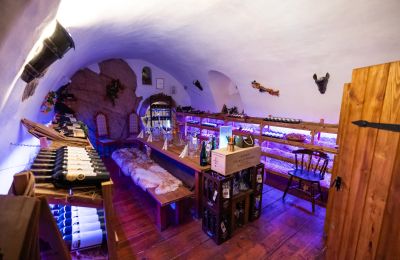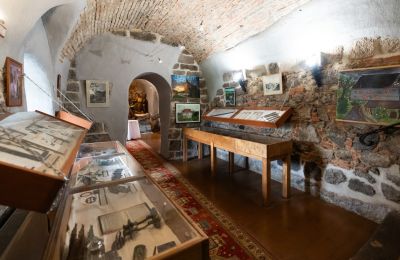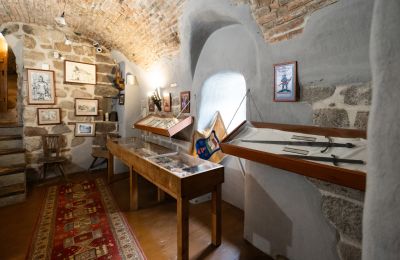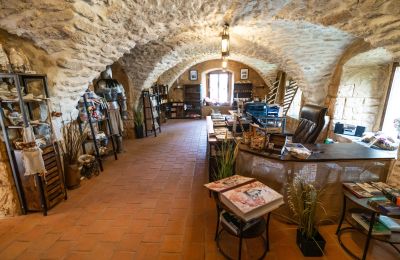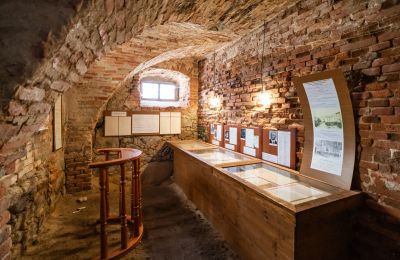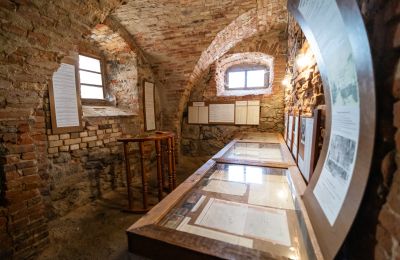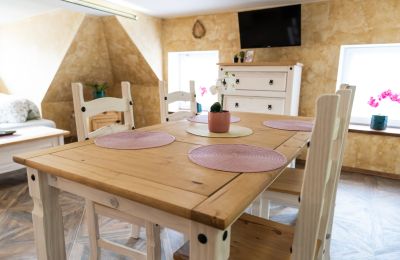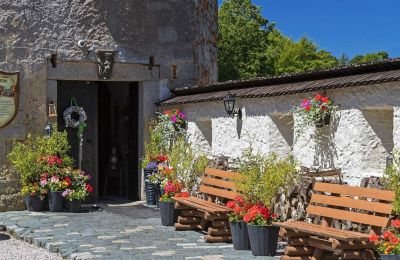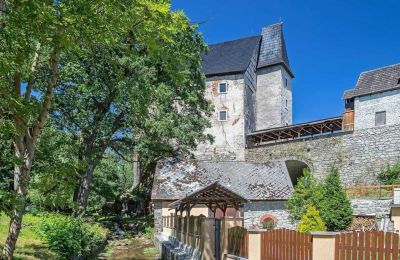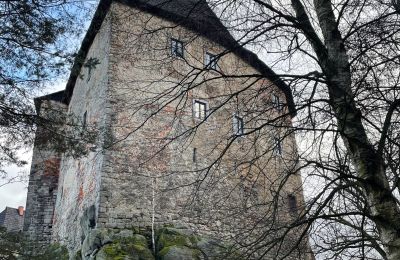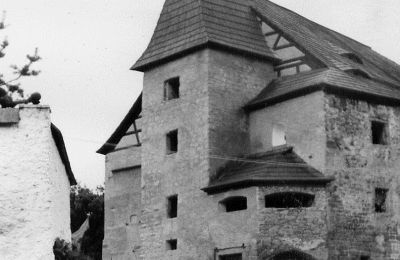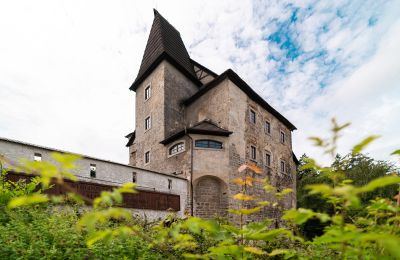For Sale: A Rare Romanesque Castle in Outstanding Condition in the Border Region of Bohemia, Bavaria, and Saxony
This early medieval Romanesque castle, one of the best-preserved examples in the region, offers a unique opportunity to own a piece of history. Influenced by the German Staufer architectural style, it dates back to 1166, predating its incorporation into the Czech Kingdom. The castle is perched on a granite outcrop above a stream, once separated from the surrounding settlement by a now-filled moat.
The Castle Complex
The estate comprises a manor house, an inner courtyard, and the castle itself, accessible via a stone bridge or staircase from the car park. The irregularly polygonal castle structure features a northern entrance, with original Romanesque elements preserved in the northern section, including the tower and chapel.
Adjacent to the manor house is a courtyard flanked by a guesthouse with seven apartments. This area includes a terrace suitable for dining, concerts, or open-air theatre. Below the castle, a car park accommodates 40 vehicles and 9 motorhomes, with stairs leading directly to the courtyard.
Castle Highlights
- Ground Floor: Fully restored medieval banquet hall, "Hodovna," with vaulted ceilings, murals of battles and religious themes, and heraldic decorations. Facilities include a kitchen and toilets.
- First Floor: A grand reception hall featuring portraits of Bohemian rulers, used for weddings, banquets, and events. An authentic period-style room and additional facilities are also located here.
- Third Floor: Dedicated to a firefighting museum.
- Underground: Includes a wine cellar and a Romanesque chapel now housing the castle museum, established after the discovery of a woman’s remains in 1987.
Additional Features
The old prison cells on the ground floor have been repurposed into a justice museum. An information centre and shop for local crafts and history books operate within this area. Plans are in place to renovate another section into 12 guest apartments, a fitness centre, and a wellness area.
Architectural and Historical Significance
Built in a Romanesque style with Staufer influences, the castle is a testament to medieval craftsmanship, retaining its original architectural character despite minor Gothic and Renaissance alterations. A Baroque-style manor was added around 1783 in the courtyard.
Founded in 1166 as a ministerial castle, it was initially owned by the Nothaft family and later managed by prominent families, including the Rabe, Šlik, and Wolkenstein-Trostburg families. Post-WWII, the castle was nationalised and fell into disrepair before being restored in 1985. Privatised in 1999, it is now fully refurbished and open to the public.
Income Potential and Usage Opportunities
The castle operates as a successful tourist destination, generating consistent income.
- Event Spaces: Two grand halls accommodating up to 230 guests, ideal for corporate events, weddings, and celebrations.
- Wine Cellar: A cosy venue for tastings, seating 14 people.
- Courtyard: Suitable for concerts and theatre performances.
- Accommodation: Seven guest rooms with 30 beds, with plans for an additional 12 rooms and wellness facilities.
- Dining: A popular restaurant with its own meat processing facility.
The property could also serve as a private residence for those seeking a historic retreat.
Utilities and Access
The estate is connected to water, sewerage, electricity, and gas, ensuring modern convenience within a historic setting.
This Romanesque castle is a rare gem, offering a blend of historical authenticity, modern functionality and versatile usage possibilities.
Prospects from the UK welcome, we speak English and advice international buyers!

